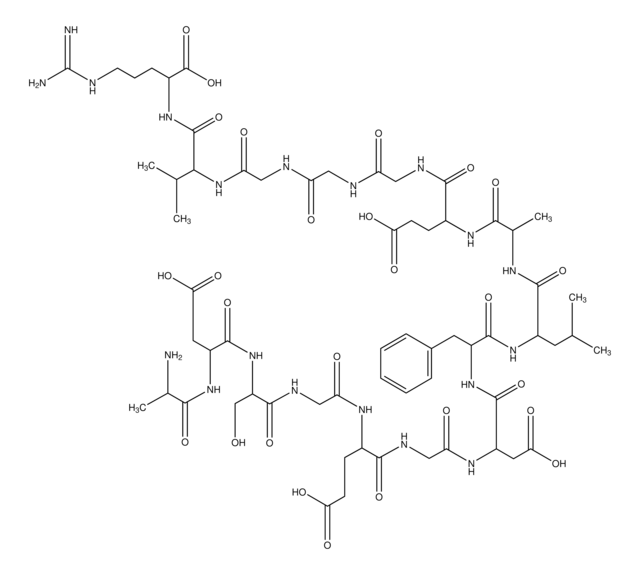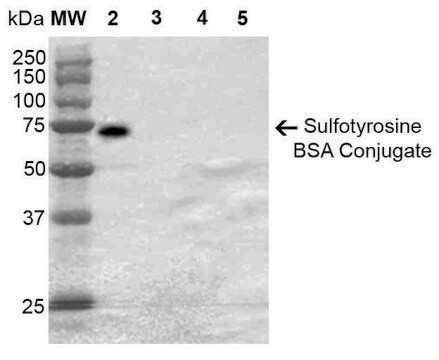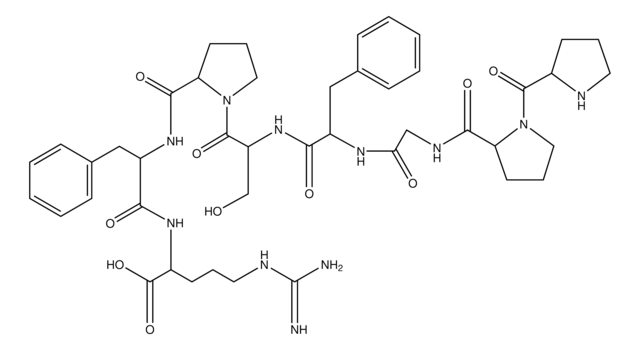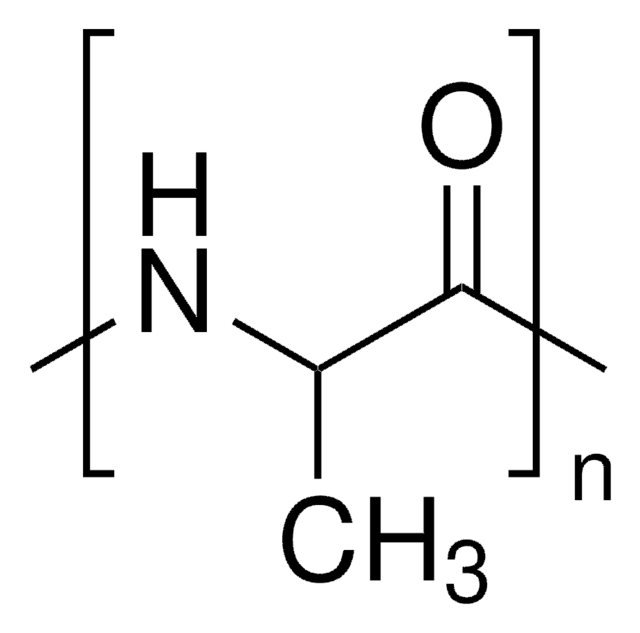F3261
[Glu1]-Fibrinopeptide B human
≥90% (HPLC)
Sinônimo(s):
Fibrinopeptide B
About This Item
Produtos recomendados
fonte biológica
human
Nível de qualidade
Ensaio
≥90% (HPLC)
forma
powder
técnica(s)
LC/MS: suitable
electrophoresis: suitable
nº de adesão UniProt
temperatura de armazenamento
−20°C
cadeia de caracteres SMILES
CC(C)[C@H](NC(=O)CNC(=O)[C@@H](N)CCC(O)=O)C(=O)N[C@@H](CC(N)=O)C(=O)N[C@@H](CC(O)=O)C(=O)N[C@@H](CC(N)=O)C(=O)N[C@@H](CCC(O)=O)C(=O)N[C@@H](CCC(O)=O)C(=O)NCC(=O)N[C@@H](Cc1ccccc1)C(=O)N[C@@H](Cc2ccccc2)C(=O)N[C@@H](CO)C(=O)N[C@@H](C)C(=O)N[C@@H](CCCNC(N)=N)C(O)=O
InChI
1S/C66H95N19O26/c1-31(2)53(85-48(90)29-73-55(100)35(67)16-19-49(91)92)64(109)83-42(26-46(69)88)61(106)82-43(27-52(97)98)62(107)81-41(25-45(68)87)60(105)78-37(18-21-51(95)96)57(102)77-36(17-20-50(93)94)56(101)74-28-47(89)76-39(23-33-11-6-4-7-12-33)58(103)80-40(24-34-13-8-5-9-14-34)59(104)84-44(30-86)63(108)75-32(3)54(99)79-38(65(110)111)15-10-22-72-66(70)71/h4-9,11-14,31-32,35-44,53,86H,10,15-30,67H2,1-3H3,(H2,68,87)(H2,69,88)(H,73,100)(H,74,101)(H,75,108)(H,76,89)(H,77,102)(H,78,105)(H,79,99)(H,80,103)(H,81,107)(H,82,106)(H,83,109)(H,84,104)(H,85,90)(H,91,92)(H,93,94)(H,95,96)(H,97,98)(H,110,111)(H4,70,71,72)/t32-,35-,36-,37-,38-,39-,40-,41-,42-,43-,44-,53-/m0/s1
chave InChI
KPBJTGOVJLITON-OECXYHNASA-N
Informações sobre genes
human ... FGB(2244)
Procurando produtos similares? Visita Guia de comparação de produtos
Amino Acid Sequence
Descrição geral
Aplicação
- during LC-MS to avoid cross-contamination and to analyze the performance of mass spectrometer and LC-instrument
- for two-point calibration during 2D (dimensional) gel electrophoresis and protein identification by mass spectrometry of histidine (his)-Pup (prokaryotic ubiquitin-like protein) isolated from Mycobacterium smegmatis
- for two-point calibration during one-dimensional gel electrophoresis and tandem mass spectrometry (MS) for the characterization of soluble protein sample obtained from the salivary gland homogenates of Cimex lectularius
- as a standard for the correction of mass drift in data obtained from MS and MS/MS performed on peptides obtained from trypsin-digestion of protein disulfide isomerase (PDI)
Ações bioquímicas/fisiológicas
Outras notas
Código de classe de armazenamento
11 - Combustible Solids
Classe de risco de água (WGK)
WGK 3
Ponto de fulgor (°F)
Not applicable
Ponto de fulgor (°C)
Not applicable
Equipamento de proteção individual
Eyeshields, Gloves, type N95 (US)
Certificados de análise (COA)
Busque Certificados de análise (COA) digitando o Número do Lote do produto. Os números de lote e remessa podem ser encontrados no rótulo de um produto após a palavra “Lot” ou “Batch”.
Já possui este produto?
Encontre a documentação dos produtos que você adquiriu recentemente na biblioteca de documentos.
Os clientes também visualizaram
Nossa equipe de cientistas tem experiência em todas as áreas de pesquisa, incluindo Life Sciences, ciência de materiais, síntese química, cromatografia, química analítica e muitas outras.
Entre em contato com a assistência técnica










![[Met5]Enkephalin acetate salt hydrate ≥95.0% (HPLC), powder](/deepweb/assets/sigmaaldrich/product/structures/158/699/80b4b65b-7e48-49a2-ba61-4433cf1f375c/640/80b4b65b-7e48-49a2-ba61-4433cf1f375c.png)

